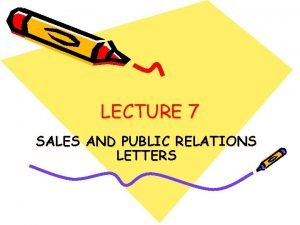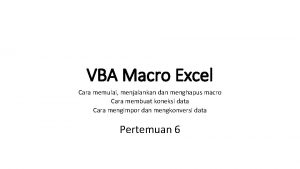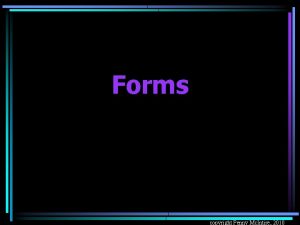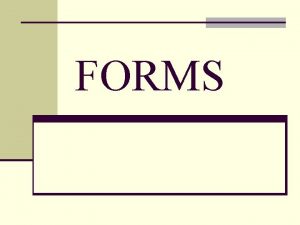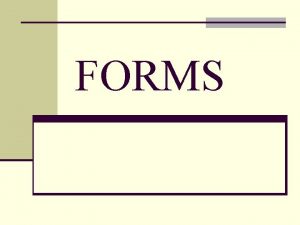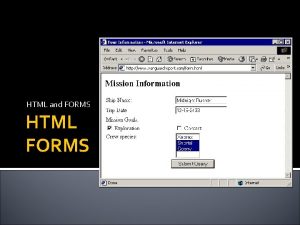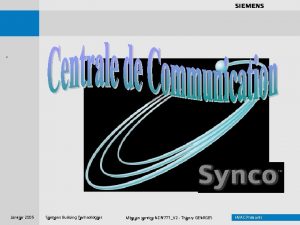Unit 1 2007 09 04 Italic letter forms





































- Slides: 37

Unit 1 2007 -09 -04

Italic letter forms • Only six letters have significantly different italic letter forms










Soft consonants • Hard (non-palatalized) consonants are plain ol’ consonants • Soft (palatalized) consonants have a “y” sound pronounced simultaneously with the basic consonant sound • Soft consonants are followed by softening vowel letters (я, е, и, ё, ю) or soft sign (ь) • та, тя











Ты and вы • Russian has two words for ‘you’: ты and вы • Use ты when speaking to one person who is either a family member, a friend or peer, or a child • Use вы when speaking to a group of people or to someone to whom you want to show respect • Russian students and their teachers use вы with one another (in both directions) • Russian students use ты with one another









Introducing people to each other • Person introducing Julie and David turns to David and says: – Познако мьтесь! (gestures toward Julie) Э то Ю лия. • David turns to Julie and says: – Здра вствуйте! (Меня зову т) Де йвид. • Julie replies to David: – (Меня зову т) Ю лия. О чень прия тно (с ва ми познако миться).


Etiquette of address • Address friends and peers (including fellow students) by first name or nickname. • Address older people by first name (not nickname) and patronymic. • There is a Russian counterpart to “Mr. ” or “Ms. , ” but it is much more official than the English and is not commonly used. • Foreigners do not use patronymics. Russians will usually address you by first name.



 Serif outline font
Serif outline font Entitati carte
Entitati carte Cei 7 regi ai romei
Cei 7 regi ai romei Sky grass and root letters
Sky grass and root letters Unit 10, unit 10 review tests, unit 10 general test
Unit 10, unit 10 review tests, unit 10 general test Why are related forms more agreeable than unrelated forms
Why are related forms more agreeable than unrelated forms Short contracted forms
Short contracted forms Why are related forms more agreeable than unrelated forms
Why are related forms more agreeable than unrelated forms Why are related forms more agreeable than unrelated forms?
Why are related forms more agreeable than unrelated forms? Strong and weak forms
Strong and weak forms Unit 2 past tenses
Unit 2 past tenses Present perfect cuando se usa
Present perfect cuando se usa Present tenses contrast
Present tenses contrast Future tense of float
Future tense of float Last and ago difference
Last and ago difference What did the decimal say to the other
What did the decimal say to the other Unit 1 present simple
Unit 1 present simple Write a friendly letter
Write a friendly letter A friendly letter
A friendly letter Letter of placement of order
Letter of placement of order Difference between friendly letter and business letter
Difference between friendly letter and business letter Full block and modified block
Full block and modified block Difference between sales letter and sales promotion letter
Difference between sales letter and sales promotion letter Writing friendly letter
Writing friendly letter How to write an informal email
How to write an informal email Metode pembiayaan langsung (direct financing method)
Metode pembiayaan langsung (direct financing method) Hyp opp adj triangle
Hyp opp adj triangle English unit conversions
English unit conversions Unit test unit test review algebra 2
Unit test unit test review algebra 2 Contoh unit cost rekam medis
Contoh unit cost rekam medis Unit process and unit operation
Unit process and unit operation Difference between unit process and unit operation
Difference between unit process and unit operation Setiap unit akuntansi dianggap sebagai unit yang mandiri
Setiap unit akuntansi dianggap sebagai unit yang mandiri Ribbon untuk memulai vba excel adalah
Ribbon untuk memulai vba excel adalah Excel
Excel Mental health act 2007
Mental health act 2007 Delhi fire service act
Delhi fire service act Df 23/2007
Df 23/2007






















